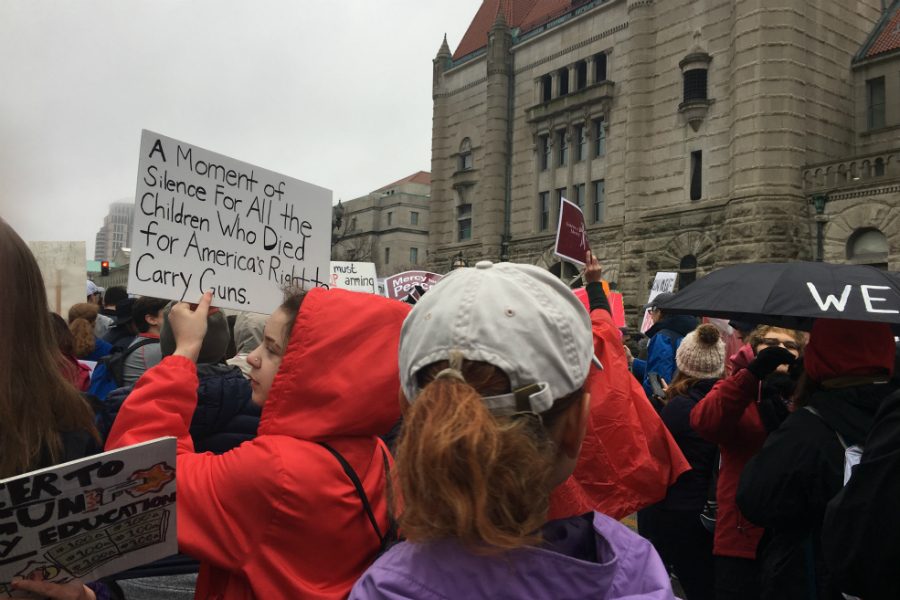The Aftermath of the March For Our Lives
Credit to Madison Abanathie
Protestors marching at the STL March for Our Lives on March 24. Many brought umbrellas in case of rain, as well as signs carrying slogans and messages.
Published: April 2, 2018
800,000 people.
That is how many people attended the March For Our Lives in Washington, D.C.. On March 24, 2018, many students, teachers, parents, and supporters of the gun control movement marched with powerful slogans and with the purpose of showing Congress exactly how many people support gun control. The march took place across all 50 states, with civilians carrying posters and megaphones in support of their cause. While many praise the survivors of the Parkland shooting for catalyzing the American public into marching for gun control, critics ask the question: exactly how effective is this march going to be?
The answer is: nobody knows. A march of this scale has never taken place in support of gun control before, and never have the survivors of a school shooting been advocates for gun control in this manner. One of the most notable examples of this advocacy came from Marjory Stoneman Douglas senior David Hogg, when he said the following on Saturday: “Inaction is no longer safe. And to that, we say: No more.”
Hogg is correct. Inaction is no longer a viable option for America. Far too many lives have been taken while Congress has been fighting about the political correctness of gun control measures. The march, and the larger gun control movement behind it, have effectively opened America’s eyes to the issue of gun violence in America. As the march slogan goes, enough is enough. This march will make a change, and one can only hope that Congress is ready to embrace it.







![FHN Holds Prom at Old Hickory Country Club [Photo Gallery]](https://FHNtoday.com/wp-content/uploads/2024/04/Brewer_stopmotion-9-300x200.jpg)
![FHN Boys Varsity Volleyball Team Goes Against Troy [Photo Gallery]](https://FHNtoday.com/wp-content/uploads/2024/03/IMG_7545-300x200.jpg)
![FHN Students Watch the Solar Eclipse [Photo Gallery]](https://FHNtoday.com/wp-content/uploads/2024/04/4.8.24-solar-eclipse_-300x200.jpg)
